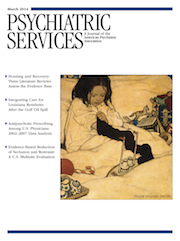Evidence-Based Values in Housing and Treatment
From this month’s Assessing the Evidence Base Series reviews, we learn that most residential treatment and recovery housing programs are “challenged by a lack of a clear definition of service methods, treatment duration, and treatment standards.” The same can also be said for the innumerable group homes, board-and-care homes, adult homes, and other forms of not-well-defined or regulated congregate housing used in most states as permanent housing for people with mental illness. Among this assortment of programs, permanent supportive housing is one model that provides clearly defined program fidelity standards. These standards reflect critical program features and underlying philosophies that have consistently produced significantly better housing and treatment outcomes. The standards provide guidance on principles and structure and yet are flexible enough to accommodate local adaptations for various populations and cultural and geographic contexts. The challenge now becomes how to transform the practice of the many existing programs and to help them adopt the standards of permanent supportive housing and Housing First.
Adopting such standards would improve access to housing, remove treatment adherence as a condition for housing or continued tenancy, direct service providers to adopt a consumer-driven approach, provide housing that is integrated into the community, and improve housing stability and clinical outcomes. Fidelity standards can serve as a guide for program development, shed light on the areas in which programs need improvement, and assist in capturing outcome data. However, we also need to continually expand our research and evidence base, because current outcomes are often too narrowly focused on housing stability and on reductions in use of acute care services, symptoms, and drug and alcohol use. If our program goal is recovery, measuring recovery requires greater use of mixed-methods approaches and a focus on indicators that define improved quality of life and the routine pursuits of everyday life, which are the domains of interest to consumers.
Even if we made all these adjustments in program fidelity, providing recovery-oriented services is broader than simply improving scores on a checklist. An effective permanent supportive housing model with a focus on recovery, such as Housing First, must be based on core principles and values: housing as a basic right, social inclusion, and equal access to social, cultural, educational, and employment opportunities. These values define and create a program culture that constitutes a capability- or strengths-based foundation for offering services that demonstrate respect for consumer choice and that convey acceptance and hope to consumers. These qualities must be palpable in the work of the housing and service providers and clearly communicated so that they are perceived and understood by consumers. Only then will we have a program that can truly be called a recovery-oriented practice.



